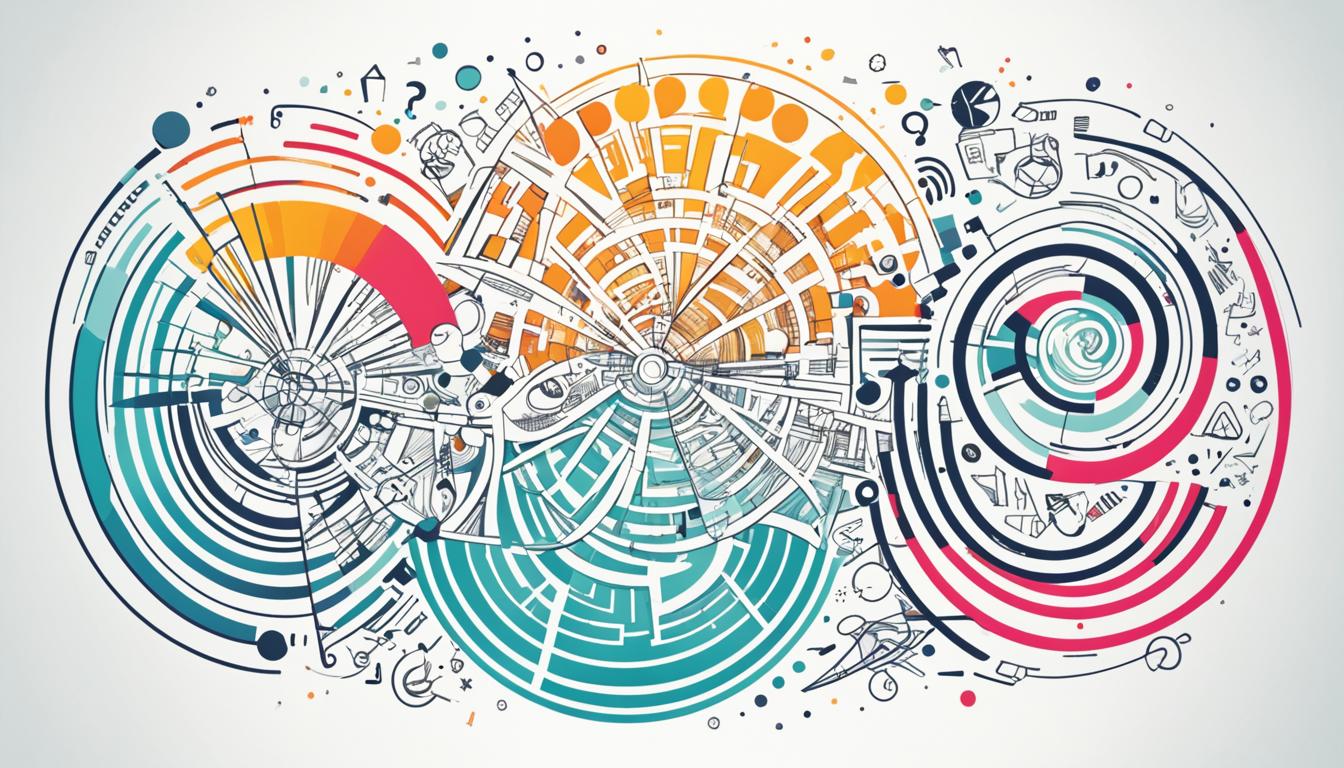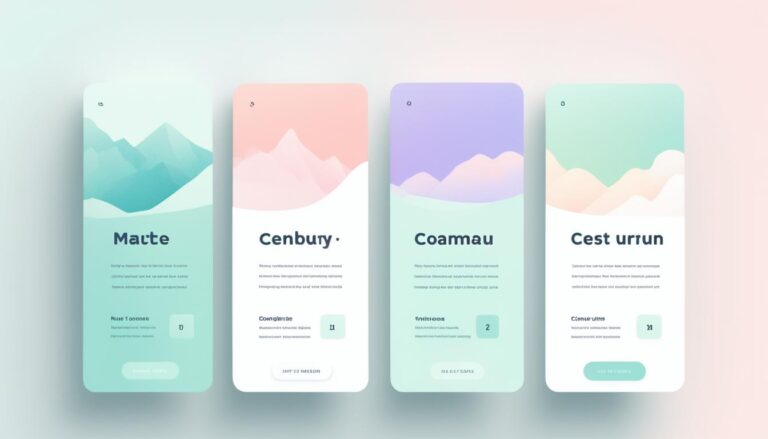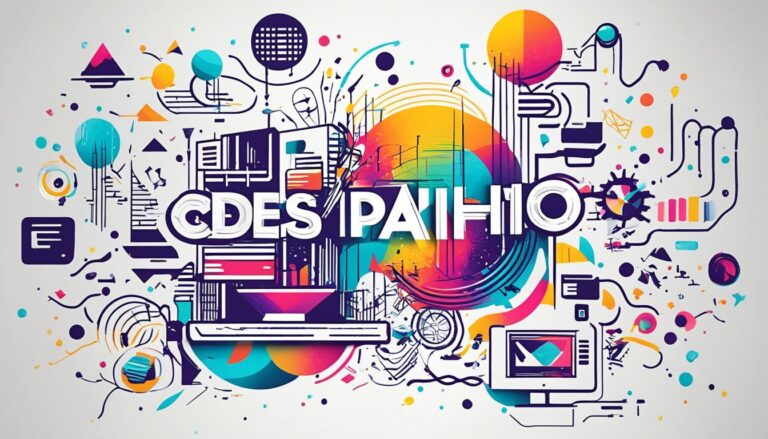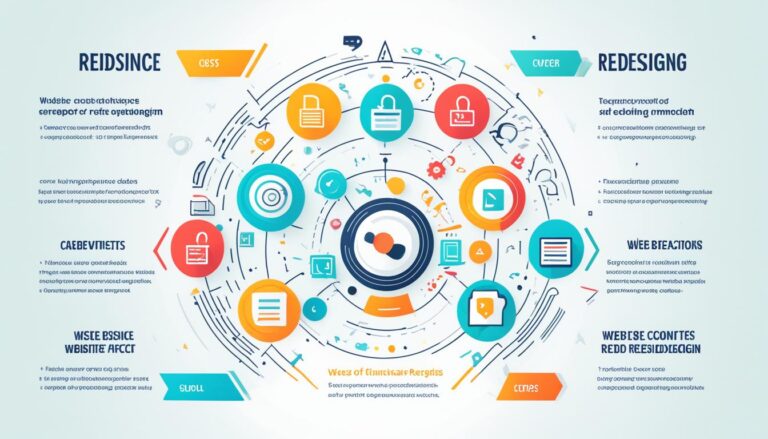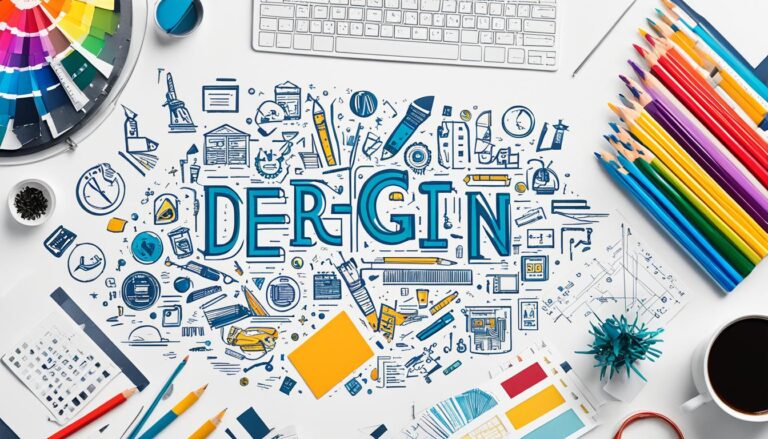Unlocking Creativity: What Is Graphic Design?
Graphic design is a dynamic field that merges creative expression with visual communication. It encompasses the process of blending a client’s vision with the artistic expertise of a designer to create captivating visual stories. The aesthetics and functionality of graphic design are key, as their harmonious interplay produces designs that not only look visually appealing but also effectively convey messages. Whether it’s a striking logo, an attention-grabbing website, or an eye-catching poster, graphic design has the power to communicate, persuade, and inspire.
In the realm of graphic design, it is about more than just making things look good; it is about making things feel right and leaving a lasting impact on viewers. The creative process in graphic design involves the application of design principles, such as composition, contrast, balance, and repetition, to create visually harmonious compositions. Through mastery of design software tools like Adobe Illustrator and Adobe Photoshop, designers bring their creative visions to life, adding depth and dimension to their work.
Graphic design not only plays a significant role in visual storytelling but also offers practical skills and creative expression opportunities. The demand for graphic design skills in today’s job market is high, making it a valuable asset for individuals entering various industries. Through design education, aspiring designers learn to cultivate their creativity and develop proficiency in various design techniques, ensuring they are prepared to make a meaningful impact in the industry. Platforms like Schoolopedia and initiatives like Digital Pakistan aim to empower the youth by providing access to design education and skills development opportunities, fostering a new generation of talented designers.
By understanding the essence of graphic design – the melding of creativity, visual communication, and an appreciation for aesthetics and functionality – we can fully grasp its power to transform and shape our visual world.
The Power of Graphic Design
Graphic design is a powerful tool that drives visual storytelling and enables creative expression. Combining artistic prowess with technological expertise, graphic design is instrumental in effectively conveying messages to audiences. In today’s job market, graphic design skills are in high demand due to their ability to captivate and engage viewers.
Understanding the principles of design, such as composition, balance, contrast, and repetition, forms the foundation for creating visually harmonious compositions that resonate with viewers. These principles ensure that graphics are not only aesthetically appealing but also effectively communicate the intended message.
Mastery of design software, such as Adobe Illustrator and Adobe Photoshop, empowers designers to bring their creative visions to life. These tools provide a platform for designers to unleash their imagination and transform ideas into visually stunning designs.
Learning graphic design opens up a world of creative expression and practical skills that are invaluable in various industries. By honing their design skills, individuals can pursue fulfilling careers in fields like advertising, marketing, web design, and more.
Moreover, graphic design education plays a pivotal role in nurturing creativity and equipping the next generation of designers for success in the industry. Design schools and programs offer comprehensive curricula that teach not only technical skills but also design theory, history, and critical thinking.
With the rapid advancement of technology, design education also integrates practical knowledge of the digital landscape, including responsive web design, UX/UI design, and interactive design. By staying abreast of industry trends and technological advancements, design students are better prepared to navigate the evolving demands of the digital era.
Graphic design education goes beyond the classroom, fostering collaboration and community building. Students are encouraged to participate in design competitions, workshops, and industry events, providing invaluable opportunities to network, learn from experts, and showcase their creative talent.
Building Bridges Between Creativity and Career
The benefits of graphic design education extend beyond developing technical skills. Design programs focus on nurturing creative thinking, problem-solving abilities, and visual communication skills. Through hands-on projects and real-world experiences, students learn to transform abstract ideas into tangible design solutions that meet the needs of clients and users.
Furthermore, design education instills a mindset of continuous learning and adaptation. As technology and design trends evolve, designers must stay ahead of the curve by acquiring new skills, exploring emerging tools, and embracing innovative approaches to problem-solving.
Graphic design education not only prepares individuals for a rewarding career but also empowers them to make a difference in the world. Designers have the unique ability to shape our visual environment, influence perceptions, and convey impactful messages that resonate with diverse audiences.
Ultimately, graphic design is a remarkable medium that empowers individuals to channel their creativity, acquire practical skills, and contribute to the visual aesthetics of our society. By embracing design education and honing their craft, aspiring designers can unlock their full creative potential and make a lasting impact on the world of visual communication.
The Value of Design Education
Design education is crucial in equipping aspiring designers with the necessary skills and knowledge to succeed in the industry. By enrolling in reputable design programs, students gain exposure to various design disciplines, develop a comprehensive understanding of design principles, and engage in practical, hands-on learning experiences.
Here are a few key benefits of design education:
| Creative Expression | Practical Skills | Industry Relevance |
|---|---|---|
| Design education nurtures creativity and encourages innovative thinking, enabling students to express their unique artistic vision. | Through design education, students acquire practical skills and proficiency in industry-standard design software, enhancing their employability. | Design programs provide insights into the latest industry trends, technological advancements, and user-centric design approaches. |
| Critical Thinking | Collaboration | Portfolio Development |
| Design education fosters critical thinking skills, enabling students to analyze problems and develop effective design solutions. | Collaborative projects and group work promote teamwork, communication, and the ability to work effectively in multidisciplinary environments. | Students build a strong portfolio of projects throughout their design education, showcasing their skills and creativity to potential employers. |
Design education not only imparts technical knowledge but also cultivates a design mindset, integrating creativity, problem-solving, and empathy into the design process. By honing their design skills and embracing design education, aspiring designers can embark on a fulfilling career journey and contribute to the ever-evolving field of graphic design.
Crafting the User Experience with UI/UX
UI/UX design is a crucial aspect of creating effective and engaging digital experiences. It encompasses the process of designing user interfaces and crafting user experiences that are visually appealing, intuitive, and efficient. By focusing on the needs and behaviors of users, UI/UX designers aim to create interfaces that enhance usability and satisfaction.
Wireframing and prototyping are integral stages in the UI/UX design process. They allow designers to outline the layout and functionality of a digital interface before diving into the visual design. Through wireframes, designers can structure the content and user flow, ensuring a seamless and logical experience. Prototyping, on the other hand, helps simulate the interaction and functionality of the interface, allowing designers to test and refine the user experience.
“Good design is obvious. Great design is transparent.” – Joe Sparano
Design ethics play a significant role in UI/UX design. It involves considering factors such as copyright, responsible use of design elements, and accessibility to ensure inclusive and diverse digital experiences. Accessibility, in particular, focuses on making interfaces usable for people of all abilities and disabilities. This involves incorporating features like alt text for images, keyboard navigation options, and appropriate color contrasts.
Web design and data visualization also intersect with UI/UX design. Web design involves designing and structuring websites to create seamless browsing experiences for users. Data visualization, on the other hand, harnesses design principles to present complex information in a visually digestible format.
| Key Components of UI/UX Design | Description |
|---|---|
| Visual Appeal | The visual elements of an interface, including typography, colors, and imagery, should create a visually pleasing and cohesive design. |
| Intuitiveness | The interface should be easy to understand and navigate, minimizing the need for users to think about how to interact with it. |
| User-Friendliness | The interface should be designed with the user in mind, prioritizing their needs, preferences, and goals. |
| Efficiency | UI/UX design aims to streamline interactions, ensuring that users can accomplish tasks quickly and easily. |
| Usability Testing | Testing the interface with users to gather feedback and identify areas for improvement is an essential part of UI/UX design. |
Initiatives Empowering Design Education
Several initiatives and platforms are dedicated to empowering aspiring designers and providing them with access to design education and skills development opportunities:
- Digital Pakistan: A government-led initiative in Pakistan that aims to digitize the country and provide digital access and education to all.
- Schoolopedia: An online platform that offers design courses, resources, and a supportive community for designers of all levels.
With the increasing demand for seamless digital experiences, UI/UX design continues to be a valuable skillset. By understanding the principles and best practices of UI/UX design, designers can create interfaces that not only look aesthetically pleasing but also provide exceptional user experiences.
Unlocking the Creative Potential through Graphic Design
Graphic design is much more than just creating visually appealing content. It has the power to unlock creative potential and equip individuals with valuable design skills and digital literacy. By embracing design education, young designers can nurture their creativity, tackle design challenges, and embark on a journey of self-discovery.
Through structured learning and practical projects, aspiring designers gain the confidence and expertise needed to make their mark in the design world. Exposure to design communities and innovative platforms like Schoolopedia further enhance their growth by providing networking opportunities and access to valuable resources.
By understanding the true essence of graphic design, we realize that it goes beyond aesthetics. It involves crafting meaningful experiences that resonate with users and shape the visual world around us. Whether it’s creating a user-friendly website, designing a thought-provoking poster, or developing an intuitive mobile app, graphic design serves as a catalyst for communication and connection.
FAQ
What is graphic design?
Graphic design is a field that combines creativity and technology to visually convey messages and captivate audiences. It involves blending the client’s vision with the designer’s artistic expertise to create a visual story. Aesthetics and functionality are essential in graphic design, with the goal of creating something that looks good and effectively communicates a message.
What is the power of graphic design?
Graphic design has the power to communicate, persuade, and inspire. It plays a vital role in visual communication and storytelling. Graphic design education opens up a world of creative expression and practical skills that are in high demand in today’s job market. It can make things feel right and leave a lasting impact on viewers.
What is UI/UX design and its importance?
UI/UX design focuses on creating visually pleasing, intuitive, user-friendly, and efficient interfaces. Wireframing and prototyping are vital stages in the UI/UX design process to outline the layout and functionality of a digital interface and test its usability. Design ethics, including considerations such as copyright, responsible use of design elements, and accessibility, are crucial in ensuring inclusive and diverse digital experiences.
How does graphic design unlock creative potential?
Graphic design equips individuals with valuable design skills and digital literacy, unlocking their creative potential. Design education plays a crucial role in nurturing creativity, empowering the youth to tackle design challenges, and providing opportunities for self-discovery. Through structured learning, practical projects, exposure to design communities, and innovative platforms like Schoolopedia, young designers develop the confidence and skills needed to make their mark in the design world.


